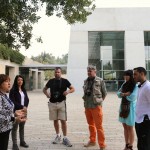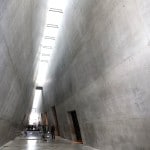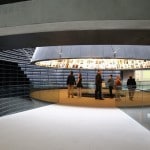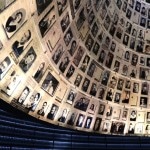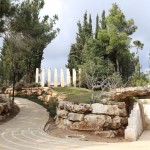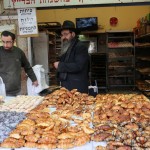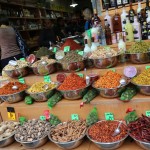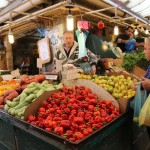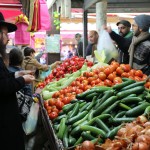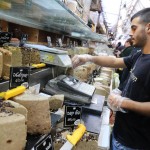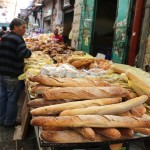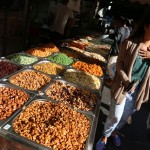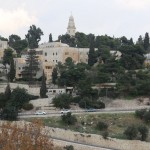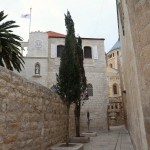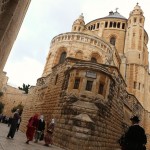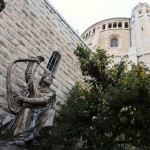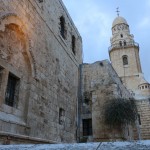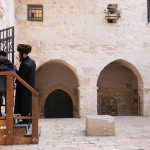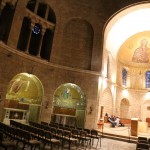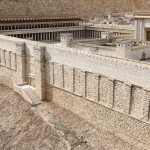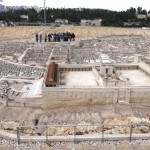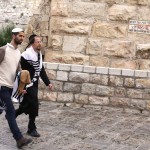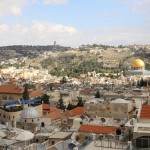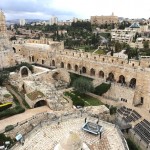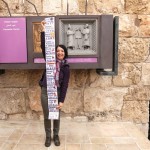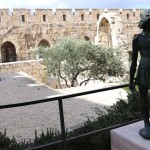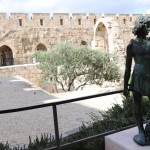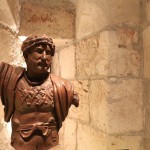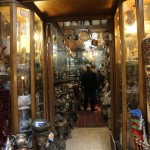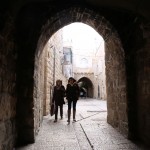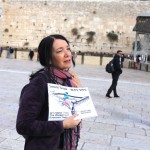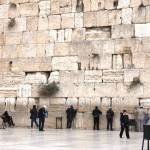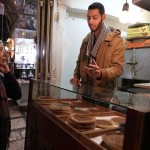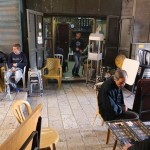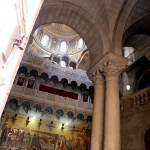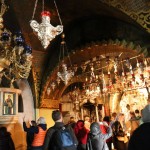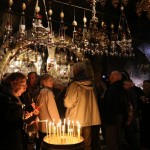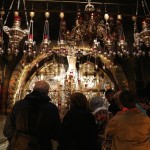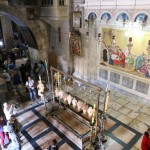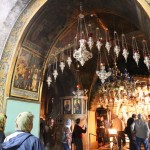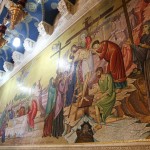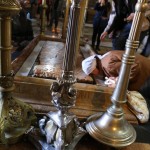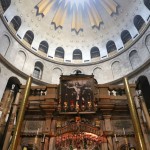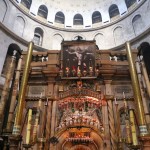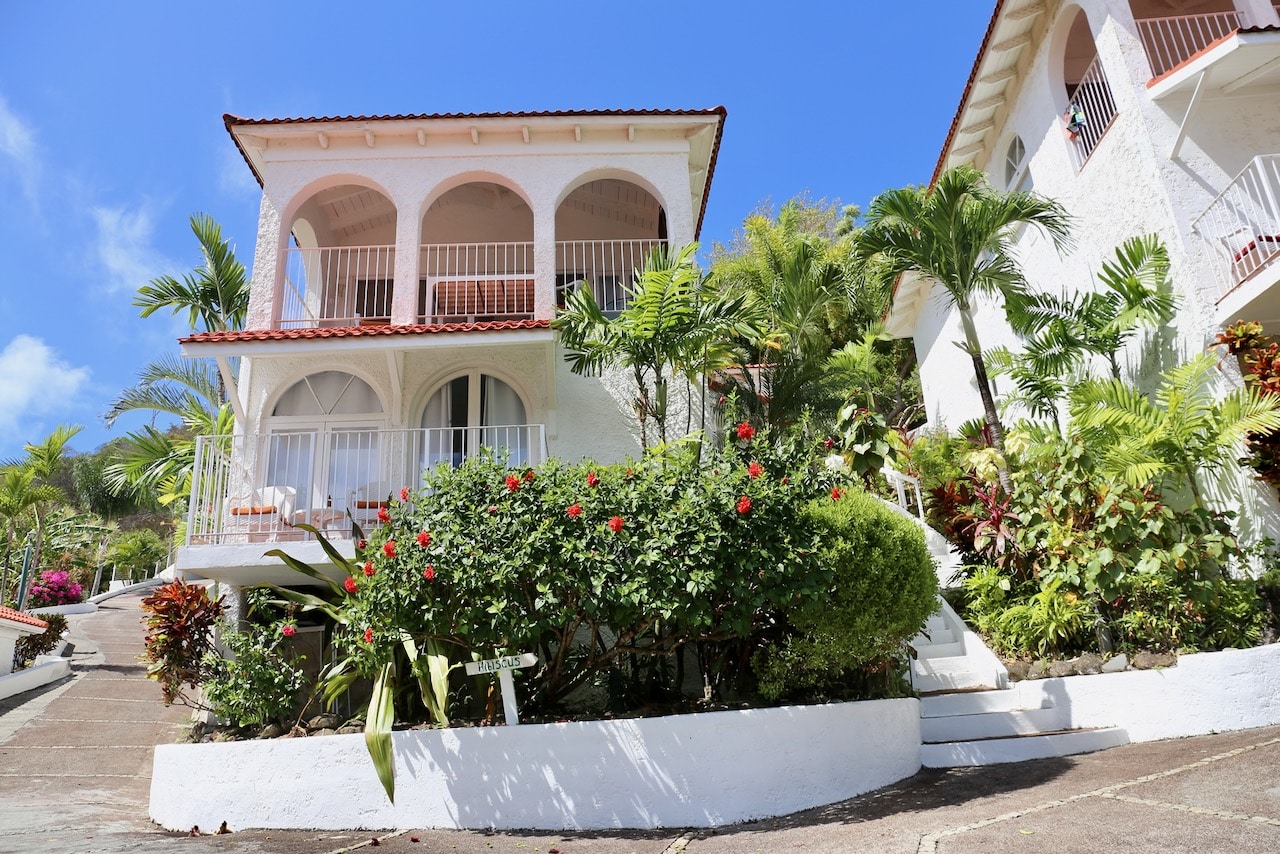Sacred to three religions and once considered to be the centre of the world itself, the Holy City is, for all its fame, quite small, far from opulent and provincial in many ways. Yet it’s hard to explain the wild wonder one experiences when whisking yourself through Jerusalem, one of the world’s last remaining living, breathing, open air museums.
Most plan their visit to Jerusalem during the work week so they can enjoy the hustle and bustle of the Jewish Quarter. We arrived in the Holy City on the morning of Shabbat (Friday), the holiest day of the week for Jews. At first it seemed like a bad idea in terms of what we were able to see (many of the shops were closed and the Jewish Quarter felt a bit like a ghost town) but soon appreciated our unique opportunity. Visit the local market on a Friday afternoon and you’ll see a dizzying energy as last minute shoppers grab ingredients for the eve’s family feast. On Saturday morning a stroll to the Wailing Wall offers a quiet, contemplative experience void of testy tourist hoards.
The Mount Zion Hotel Jerusalem
The Mount Zion Hotel is a boutique property located on the outskirts of the Old City in west Jerusalem. It is an unusually sited property, built into the side of a hill facing Mount Zion, with the lobby on the top floor. The old wing was built as an eye hospital back in 1882 while the new wing was added in 1986. Both have been renovated recently with large comfy rooms. It boats the biggest hotel pool in the city as well as a hot pool located in an original water cistern under the hotel’s old wing. Be sure to pay a little extra for a room with a view as you’ll wake up every morning to a stunning panorama featuring David’s Tower, Mount Zion and the Hinnom Valley.
Yad Vashem
Our first stop was the somber yet inspiring Yad Vashem. Established as the Holocaust Martyrs’ and Heroes’ Remembrance Authority in 1953, Yad Vashem is entrusted with the task of commemorating, documenting, researching and educating about the Shoah of the six million Jews murdered by the German Nazis and their collaborators, the destroyed Jewish communities, the ghetto and resistance fighters, and the Righteous Among the Nations who risked their lives to rescue Jews during the Holocaust.
In 2005 a new complex was inaugurated, replacing the museum that originally opened in the 1970s. Designed by world-renowned Canadian architect Moshe Safdie, the new Holocaust History Museum is a prism-like triangular structure that penetrates the mountain from one side to the other, with both ends dramatically cantilevering into the open air. One of the basic guidelines for the museum’s design was to create a visitor’s route dictated by the evolving narrative, with a beginning, middle and end. A central 180-meter walkway was built with exhibition galleries on either side. Between each of these galleries is an impassable gap extending along the breadth of the prism floor. The gaps constitute a physical obstacle, guiding the visitor into the adjacent galleries, yet always enabling eye contact with either end of the prism. The prism is therefore a longitudinal axis of historical memory, crossed by visitors as they move from one gallery to the next and from one subject to another.
Yad Vashem receives over 1 million visitors each year, none of which leave the museum with a dry eye. One can’t help but appreciate the buildings symbolic beauty while quietly strolling through galleries which depict the Holocaust from a uniquely Jewish perspective via authentic artifacts and testimonies presented in pictures, texts, multimedia and personal objects – telling the stories of the victims behind them.
Mahane Yehuda Market
Mahane Yehuda is Jerusalem’s bustling marketplace and reaches its busy peak on Friday afternoon before Shabbat (an opportune time to plan a visit). Built to house Jewish immigrant workers, its chaotic maze of streets is crammed with minute houses of wildly differing character. The market’s more than 250 vendors sell their goods with jubilation being sure to chirp their best prices of the day. You’ll find mountains of colourful fruit and veg, toasty braided Challah loaves, fresh fish, endless slabs of cheese, and bags teaming with seeds, nuts and spices. If you arrive peckish there are endless opportunities to grab cheap eats. Guzzle a bottle of local brew while nibbling your way through falafel, shawarma, kibbeh, kebab or shashlik.
Mount Zion
Southwest of the Old City, Mount Zion is recognizable by the distinctive conical roof of Dormition Abbey. This attractive white stone building was erected in 1900 and is traditionally believed to be on the site where Mary lived after her son’s crucifixion, and also the site of her death, an event marked by a mausoleum in the bright modern crypt, decorated with twelve columns. Down the Hill to the right and virtually in the shadow of the Abbey, the Coenaculum, is reputedly the room in which the Last Supper took place. Somewhat smaller than the one depicted in Leonardo da Vinci’s famous fresco, the peaceful room was actually built long after Jesus’s time, under the Crusaders, with their characteristic pointed arches.
The Tower of David Museum
The Tower of David Museum is located in the magnificently restored ancient Citadel, near the Jaffa Gate, the historic entrance to Jerusalem’s Old City. The permanent exhibition, housed in the guardrooms, tell the fascinating and complex story of the history of the city over the course of 4000 years. The citadel compound also includes archaeological findings attesting to Jerusalem’s long and eventful history: remains of a quarry from the First Temple period; a segment of the wall surrounding Hasmonean Jerusalem (the first wall); remains of monumental steps probably from Herod’s palace and the remains of a fortress that stood in this location during the rule of the Ummayid Dynasty (7th and 8th centuries AD). Be sure to hike to the top floor as guests enjoy the best views of Temple Mount from the al fresco observatory.
Jewish Quarter
After finishing up at the Citadel we skipped through a bazaar en route to the Jewish Quarter. It was an early afternoon on Saturday (shabbat) so rather than enjoying a chaotic and crowded shopping experience we were able to quietly stroll through the neighbourhood which almost felt like a ghost town. I wore my hair down that afternoon and hilariously had a old shopkeeper yell out to me “lady come into my store and buy something beautiful.” I quickly turned around, his face was nothing but a wash of mortified horror as he realized I had a beard and not the pretty woman of his dreams.
Our journey through the quiet Jewish Quarter would end at the Wailing Wall, the most sacred Jewish site in the world. For many years it was known to travellers as “the wailing place of the Jews,” because Jewish people traditionally came here to mourn the destruction of their ancient Temple.
Close up the Wailing Wall resembles an enormous message board to the Almighty; every nook and cranny in its massive ancient stones is stuffed with slips of paper bearing the personal prayers of the devout and the needy. Twice a year the prayer notes are taken away and buried in a Jewish cemetery to make way for more. Be sure to scribble your own hopes and dreams on a piece of parchment if you’d like to participate in the ritual. As ancient as it may be, the Wall is remarkably up to date with modern communications: its official website allows you to type out a prayer online and have it placed in the wall on your behalf.
The Church of the Holy Sepulchre
While strolling over to our final stop in Jerusalem I couldn’t help but feel contemplative. A tour through the Holy City truly is remarkable, allowing visitors to appreciate each and every pilgrim who comes here to honour their Christian, Jewish or Muslim faith.
My jaw dropped as I past through the stoic doors which act as the entrance to The Church of the Holy Sepulchre, the holiest site in Chirstendom. Traditionally ascribed as the site of Christ’s crucifixion, burial and resurrection, it is the centre of Christian worship in Jerusalem and the most venerated Christian shrine in the world. The interior of the church is a vast and rambling arena of ponderous stone architecture and gloomy, smoke blackened recesses. It is perhaps the best people watching spot in the city, offering a moody space where dramatic shadows and excitable candles flicker as devout pilgrims enjoy a well deserved angelic moment.

